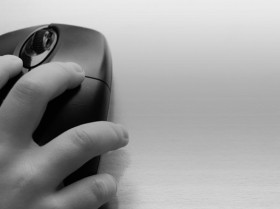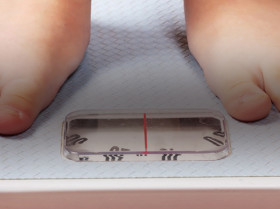Hi everyone, I have been out of the blogging and keeping quiet (for me) via Twitterverse lately. The good news is that the primary reason for this is that I am working on a really wonderful project sponsored by the Province of Nova Scotia, Department of Health and Wellness. But, I had to shift gears a few nights ago and I wrote my local Representative and Member of Congress here in the Show Me State, Missouri, regarding a bill that’s on the table.
The bill - Section A. Chapter 170, RSMo, is amended by adding one new section, to be known as section 170.044
Basically, what is says is that high school athletes can receive physical education credit for participating on a school athletic team. Now, given what 21st century quality physical education is, I know this is wrong. Below are some highlights of the letters that I wrote to my local politicians. I hope that, if you are in MO, you will do the same. If you happen to live in other states with such a law, I hope that you will take initiative to speak at the school district level to let your elected members know just how wrong this is.
Advocacy, in my humble opinion, is educating. It’s not about yelling loudly, waving our hands, or putting others down. It’s simply explaining the facts to others who might not be as passionate about the area. So, here goes my attempt to educate others on why:
Sport should be offered after school in addition to quality physical education, not in lieu of it.
Before you get into the heart of this post, understand that I LOVE sports. My partner and I were both student athletes in college and coached at the D1 NCAA/CIS level. I advocate for sport and am co-founder of a local non-profit youth wrestling club in my community here in St. Louis. I am a self described Olympic junkie and still love competing in endurance sporting events. You get the picture. My point here is that we should be finding more ways for kids to be physically active, not trying to open up more time during the school day for them to sit learn.
1. Sport in lieu of physical education does not fully prepare students to be physically literate individuals.
The new national physical education standards (available here) are based on the concept of physical literacy. A key component of physical literacy is that:
“Individuals who are physically literate will develop competence and confidence in a wide variety of physical activities.”
- PHE Canada
Thus, participation in sport - while a wonderful use of time after school - will not fully support students’ development as physically literate people. You see, quality PE also offers outdoor pursuits (hiking, biking, etc.), educational gymnastics, an understanding of personal fitness/setting goals related to fitness, etc. It is not possible to have such a variety of rich experiences with sport specialization at a young age.
2. Sport may or may not support students’ levels of physical activity at moderate to vigorous intensities.
- Physical activity at moderate to vigorous intensity...
- Decreases rates of depression.
- Increases learning readiness (how ready and how optimal a student can learn).
If physical education is removed from the school day, students will likely be less ready to learn optimally.
Moreover, at the JV and varsity levels, there are many sport participants who do not:
- Receive enough playing time for health benefit (moderate to vigorous intensity physical activity). Many rosters carry a large amount of players who do not compete in games.
- Play a position in a sport that results in adequate physical activity for health benefit (moderate to vigorous intensity) (Examples include: team managers, guards in football, goalkeeper in field sports, golf).
Of course sport provides a wonderful platform to teach life lessons, but these lessons don’t occur magically.
Sport can also be a stressor for participants who do not receive a lot of playing time!
On practice days the day before a game, the non-starters often don’t receive rigorous levels of activity. The same can be said for days after competition. Keep in mind that these are the same members who don’t receive much playing time on game day. So, not only would student athletes miss out on learning about why physical activity is so important, they would miss out on opportunities to be active optimal for health benefit (physical, emotional, social health) and learning readiness that comes from physical activity before or during the school day.
Been there, experienced that. While it may have prepared me for adversity in life, it sure didn’t aid in my opportunity to be physically active. In other words, physical activity shouldn’t be a “maybe” in our students’ school day. It should be exciting, inclusive, upbeat, and a mandated part of every child’s actual curriculum written by individuals well versed in how to write such a curriculum.
Hence, removing quality physical education - a place that provides activity at levels of health benefit in a wide variety of environments - could be very harmful to students’ health in the long term.
3. Coaches may or may not be certified educators.
I have three degrees in physical education (BScPE, MSc, PhD). I can assure you, there is a lot to 21st century PE. I will admit, traditional physical education was old school, didn’t offer valid assessments, etc. The good news is that through decades of research, teacher education programs in physical education have undergone a 180. Thank goodness! Quality physical education, taught by certified specialists, sets students up best to develop as physically literate people.
Coaches are almost always well intended people who are very passionate about their sport. I love sport. I had some incredible coaches who weren’t educators in the formal sense. But, sport is different that PE and all will benefit from education related to teaching PE and coaching. School sport coaches may not have any background in teaching, may have no coaching certification, and more than likely will have no knowledge of the national physical education standards. So, while we appreciate these individuals very much - they are often pillars in our communities - it doesn’t make them specialist physical educators.
So what is quality 21st Century Physical Education?
- Quality physical education teaches students about their health related physical fitness. By the time students complete high school, quality PE affords them the skills to assess their own physical fitness, set SMART (specific, measurable, attainable, realistic, timely) goals related to their physical fitness, and modify and/or maintain behavior related to their goals.
- Quality physical education reinforces classroom content. Physical educators don’t teach classroom content in lieu of their own curricular outcomes, they bring classroom material so that students who struggle in those areas, find more meaning in their learning. This is also done to support those students who are kinesthetic learners – those who learn better while moving.
- Quality physical education differentiates instruction, uses assessment to guide instruction, and welcomes students with disabilities to learn and grow in their physical literacy.
- Quality physical education teaches students how to be good citizens, utilize respectful language, and connects physically active experiences to life outside of school.
- Quality physical education is culturally responsive and provides opportunities for students to explore not only their heritage, but the heritage of those in the community.
- Quality physical education does not believe in down time. Students don’t stand while a physical educator speaks – they perform an activity that will impact their health related physical fitness (i.e., plank, boat, wall sit, partner balances) while they converse about the important cognitive materials covered.
- Quality physical education provides opportunity for students to sweat. Cardiovascular activities occur at least three days a week (preferably five) at moderate to vigorous intensities so students can receive health benefit. That’s not all. The research suggests that such action will increase their learning readiness (their optimal readiness to learn). Want more info? Check out Harvard Professor and Medical Doctor, Dr. John J. Ratey’s book on the topic.
- Quality physical education is innovative. Technology is used to enhance the learning environment for students. Technology lives in quality PE in the form of heart rate monitors, Apps for goal setting and personal fitness, music, assessment (iPads, etc.), GPS devices for geocaching and the list goes on…
Over 20 years ago I embarked a journey to help students grow to be healthy, happy, and productive citizens. I feel strongly that offering sport credit in lieu of quality physical education taught be a certified educator is like offering a book club after school in lieu of English class taught by a certified educator.
In the state of MO, I am not qualified to teach physical education in the public schools until I take two undergraduate classes (US History, US Government) despite my three degrees in the discipline. Now, the same state is proposing that students can opt out of my high school PE course if they play on an after school soccer team which may be coached by a local college student? There is nothing wrong with the college student, or her/his coaching the high school team. What’s wrong is an assumption by politicians that the two are the same.
It makes no sense.
We live in a time where today’s youth have a lower life expectancy than their parents for the first time (Journal of American Medical Association, 2005). Rather than try to make an easy decision and cut opportunities to promote healthy behaviors in schools, we should be working tirelessly on how to adopt a statewide Health Promoting Schools Initiative.
When our citizens are healthy, strong, productive, and have a good mind set - they will take less sick days, they will be creative, they will make MO a better place for all of us to live. For more information on Health Promoting Schools, please visit World Health Organization’s link here.
Okay. I gotta run (literally).
Have a healthy, active week and thanks for stopping by and commenting on this post!
How about you?
Are all your student athletes active enough for health benefit?
Does your sport offer a wide variety of physical activity experiences for learners?





